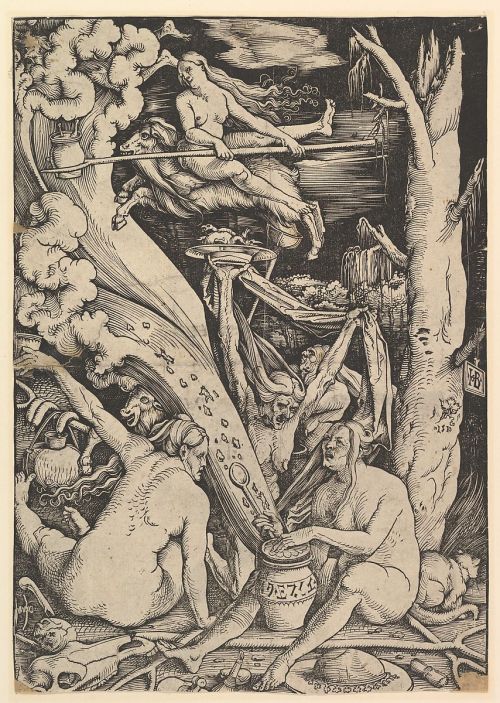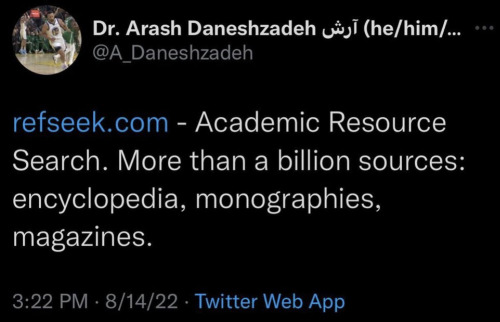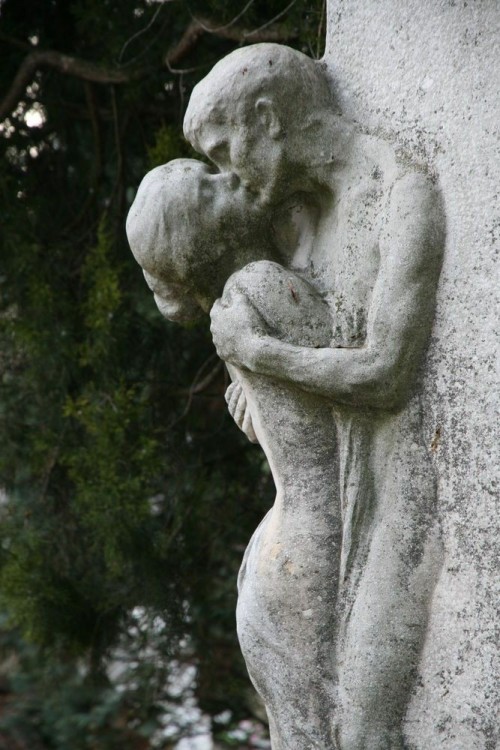twiggietruth
281 posts
Latest Posts by twiggietruth

If this is a real billboard already, the Tories are absolutely done and Sunak is absolutely finished.


The Bath of Venus (1898-1904, oil on canvas) | Charles Shannon

Two Elves by John Quincy Adams (Late 19th - Early 20th Century)

Evening Mood by William-Adolphe Bouguereau (1882)

The Witches by Hans Baldung (1510)

Daniele Accossato (1987-)
Kidnapped Love, 2015

(via Émile-Antoine Bayard’s Vivid Illustrations of Jules Verne’s Around the Moon: The First Serious Works of Space Art (1870) | Open Culture)

.
If you’re curious about Europe’s witch hunts and what Europeans believed about witches in general, Dr. Justin Sledge has an amazing set of videos on this topic: Witchcraft - The Witch Flight to the Sabbat - From Inquisitional Myth to Psychedelic Flying Ointment
Witchcraft - Malleus Maleficarum - The Hammer of Witches - History and Analysis of the Inquisition
Demonology and Demonologists - Scholastics and Inquisitors - Foundations of the Witch Trials Witches Witch-Hunting and Magic in Early-Modern Europe (FIA Lecture) The Witch Trials and the Rise of Modernity and Capitalism - Sylvia Federici - Caliban and the Witch These are all great videos, and I recommend them because they go into depth that’s hard to find elsewhere. If the history of magic and witchcraft interests you, these will not disappoint!






JSTOR Articles on the History of Witchcraft, Witch Trials, and Folk Magic Beliefs
This is a partial of of articles on these subjects that can be found in the JSTOR archives. This is not exhaustive - this is just the portion I've saved for my own studies (I've read and referenced about a third of them so far) and I encourage readers and researchers to do their own digging. I recommend the articles by Ronald Hutton, Owen Davies, Mary Beth Norton, Malcolm Gaskill, Michael D. Bailey, and Willem de Blecourt as a place to start.
If you don't have personal access to JSTOR, you may be able to access the archive through your local library, university, museum, or historical society.
Full text list of titles below the cut:
'Hatcht up in Villanie and Witchcraft': Historical, Fiction, and Fantastical Recuperations of the Witch Child, by Chloe Buckley
'I Would Have Eaten You Too': Werewolf Legends in the Flemish, Dutch and German Area, by Willem de Blecourt
'The Divels Special Instruments': Women and Witchcraft before the Great Witch-hunt, by Karen Jones and Michael Zell
'The Root is Hidden and the Material Uncertain': The Challenges of Prosecuting Witchcraft in Early Modern Venice, by Jonathan Seitz
'Your Wife Will Be Your Biggest Accuser': Reinforcing Codes of Manhood at New England Witch Trials, by Richard Godbeer
A Family Matter: The CAse of a Witch Family in an 18th-Century Volhynian Town, by Kateryna Dysa
A Note on the Survival of Popular Christian Magic, by Peter Rushton
A Note on the Witch-Familiar in Seventeenth Century England, by F.H. Amphlett Micklewright
African Ideas of Witchcraft, by E.G. Parrinder
Aprodisiacs, Charms, and Philtres, by Eleanor Long
Charmers and Charming in England and Wales from the Eighteenth to the Twentieth Century, by Owen Davies
Charming Witches: The 'Old Religion' and the Pendle Trial, by Diane Purkiss
Demonology and Medicine in the Sixteenth and Seventeenth Centuries, by Sona Rosa Burstein
Denver Tries A Witch, by Margaret M. Oyler
Devil's Stones and Midnight Rites: Megaliths, Folklore, and Contemporary Pagan Witchcraft, by Ethan Doyle White
Edmund Jones and the Pwcca'r Trwyn, by Adam N. Coward
Essex County Witchcraft, by Mary Beth Norton
From Sorcery to Witchcraft: Clerical Conceptions of Magic in the Later Middle Ages, by Michael D. Bailey
German Witchcraft, by C. Grant Loomis
Getting of Elves: Healing, Witchcraft and Fairies in the Scottish Witchcraft Trials, by Alaric Hall
Ghost and Witch in the Sixteenth and Seventeenth Centuries, by Gillian Bennett
Ghosts in Mirrors: Reflections of the Self, by Elizabeth Tucker
Healing Charms in Use in England and Wales 1700-1950, by Owen Davies
How Pagan Were Medieval English Peasants?, by Ronald Hutton
Invisible Men: The Historian and the Male Witch, by Lara Apps and Andrew Gow
Johannes Junius: Bamberg's Famous Male Witch, by Lara Apps and Andrew Gow
Knots and Knot Lore, by Cyrus L. Day
Learned Credulity in Gianfrancesco Pico's Strix, by Walter Stephens
Literally Unthinkable: Demonological Descriptions of Male Witches, by Lara Apps and Andrew Gow
Magical Beliefs and Practices in Old Bulgaria, by Louis Petroff
Maleficent Witchcraft in Britian since 1900, by Thomas Waters
Masculinity and Male Witches in Old and New England, 1593-1680, by E.J. Kent
Methodism, the Clergy, and the Popular Belief in Witchcraft and Magic, by Owen Davies
Modern Pagan Festivals: A Study in the Nature of Tradition, by Ronald Hutton
Monstrous Theories: Werewolves and the Abuse of History, by Willem de Blecourt
Neapolitan Witchcraft, by J.B. Andrews and James G. Frazer
New England's Other Witch-Hunt: The Hartford Witch-Hunt of the 1660s and Changing Patterns in Witchcraft Prosecution, by Walter Woodward
Newspapers and the Popular Belief in Witchcraft and Magic in the Modern Period, by Owen Davies
Occult Influence, Free Will, and Medical Authority in the Old Bailey, circa 1860-1910, by Karl Bell
Paganism and Polemic: The Debate over the Origins of Modern Pagan Witchcraft, by Ronald Hutton
Plants, Livestock Losses and Witchcraft Accusations in Tudor and Stuart England, by Sally Hickey
Polychronican: Witchcraft History and Children, interpreting England's Biggest Witch Trial, 1612, by Robert Poole
Publishing for the Masses: Early Modern English Witchcraft Pamphlets, by Carla Suhr
Rethinking with Demons: The Campaign against Superstition in Late Medieval and Early Modern Europe from a Cognitive Perspective, by Andrew Keitt
Seasonal Festivity in Late Medieval England, Some Further Reflections, by Ronald Hutton
Secondary Targets: Male Witches on Trial, by Lara Apps and Andrew Gow
Some Notes on Modern Somerset Witch-Lore, by R.L. Tongue
Some Notes on the History and Practice of Witchcraft in the Eastern Counties, by L.F. Newman
Some Seventeenth-Century Books of Magic, by K.M. Briggs
Stones and Spirits, by Jane P. Davidson and Christopher John Duffin
Superstitions, Magic, and Witchcraft, by Jeffrey R. Watt
The 1850s Prosecution of Gerasim Fedotov for Witchcraft, by Christine D. Worobec
The Catholic Salem: How the Devil Destroyed a Saint's Parish (Mattaincourt, 1627-31), by William Monter
The Celtic Tarot and the Secret Tradition: A Study in Modern Legend Making, by Juliette Wood
The Cult of Seely Wights in Scotland, by Julian Goodare
The Decline of Magic: Challenge and Response in Early Enlightenment England, by Michael Hunter
The Devil-Worshippers at the Prom: Rumor-Panic as Therapeutic Magic, by Bill Ellis
The Devil's Pact: Diabolic Writing and Oral Tradition, by Kimberly Ball
The Discovery of Witches: Matthew Hopkins' Defense of his Witch-hunting Methods, by Sheilagh Ilona O'Brien
The Disenchantment of Magic: Spells, Charms, and Superstition in Early European Witchcraft Literature, by Michael D. Bailey
The Epistemology of Sexual Trauma in Witches' Sabbaths, Satanic Ritual Abuse, and Alien Abduction Narratives, by Joseph Laycock
The European Witchcraft Debate and the Dutch Variant, by Marijke Gijswijt-Hofstra
The Flying Phallus and the Laughing Inquisitor: Penis Theft in the Malleus Maleficarum, by Moira Smith
The Framework for Scottish Witch-Hunting for the 1590s, by Julian Goodare
The Imposture of Witchcraft, by Rossell Hope Robbins
The Last Witch of England, by J.B. Kingsbury
The Late Lancashire Witches: The Girls Next Door, by Meg Pearson
The Malefic Unconscious: Gender, Genre, and History in Early Antebellum Witchcraft Narratives, by Lisa M. Vetere
The Mingling of Fairy and Witch Beliefs in Sixteenth and Seventeenth Century Scotland, by J.A. MacCulloch
The Nightmare Experience, Sleep Paralysis, and Witchcraft Accusations, by Owen Davies
The Pursuit of Reality: Recent Research into the History of Witchcraft, by Malcolm Gaskill
The Reception of Reginald Scot's Discovery of Witchcraft: Witchcraft, Magic, and Radical Religions, by S.F. Davies
The Role of Gender in Accusations of Witchcraft: The Case of Eastern Slovenia, by Mirjam Mencej
The Scottish Witchcraft Act, by Julian Goodare
The Werewolves of Livonia: Lycanthropy and Shape-Changing in Scholarly Texts, 1550-1720, by Stefan Donecker
The Wild Hunter and the Witches' Sabbath, by Ronald Hutton
The Winter Goddess: Percht, Holda, and Related Figures, by Lotta Motz
The Witch's Familiar and the Fairy in Early Modern England and Scotland, by Emma Wilby
The Witches of Canewdon, by Eric Maple
The Witches of Dengie, by Eric Maple
The Witches' Flying and the Spanish Inquisitors, or How to Explain Away the Impossible, by Gustav Henningsen
To Accommodate the Earthly Kingdom to Divine Will: Official and Nonconformist Definitions of Witchcraft in England, by Agustin Mendez
Unwitching: The Social and Magical Practice in Traditional European Communities, by Mirjam Mencej
Urbanization and the Decline of Witchcraft: An Examination of London, by Owen Davies
Weather, Prayer, and Magical Jugs, by Ralph Merrifield
Witchcraft and Evidence in Early Modern England, by Malcolm Gaskill
Witchcraft and Magic in the Elizabethan Drama by H.W. Herrington
Witchcraft and Magic in the Rochford Hundred, by Eric Maple
Witchcraft and Old Women in Early Modern Germany, by Alison Rowlands
Witchcraft and Sexual Knowledge in Early Modern England, by Julia M. Garrett
Witchcraft and Silence in Guillaume Cazaux's 'The Mass of Saint Secaire', by William G. Pooley
Witchcraft and the Early Modern Imagination, by Robin Briggs
Witchcraft and the Western Imagination by Lyndal Roper
Witchcraft Belief and Trals in Early Modern Ireland, by Andrew Sneddon
Witchcraft Deaths, by Mimi Clar
Witchcraft Fears and Psychosocial Factors in Disease, by Edward Bever
Witchcraft for Sale, by T.M. Pearce
Witchcraft in Denmark, by Gustav Henningsen
Witchcraft in Germany, by Taras Lukach
Witchcraft in Kilkenny, by T. Crofton Croker
Witchcraft in Anglo-American Colonies, by Mary Beth Norton
Witchcraft in the Central Balkans I: Characteristics of Witches, by T.P. Vukanovic
Witchcraft in the Central Balkans II: Protection Against Witches, by T.P. Vukanovic
Witchcraft Justice and Human Rights in Africa, Cases from Malawi, by Adam Ashforth
Witchcraft Magic and Spirits on the Border of Pennsylvania and West Virginia, by S.P. Bayard
Witchcraft Persecutions in the Post-Craze Era: The Case of Ann Izzard of Great Paxton, 1808, by Stephen A. Mitchell
Witchcraft Prosecutions and the Decline of Magic, by Edward Bever
Witchcraft, by Ray B. Browne
Witchcraft, Poison, Law, and Atlantic Slavery, by Diana Paton
Witchcraft, Politics, and Memory in Seventeeth-Century England, by Malcolm Gaskill
Witchcraft, Spirit Possession and Heresy, by Lucy Mair
Witchcraft, Women's Honour and Customary Law in Early Modern Wales, by Sally Parkin
Witches and Witchbusters, by Jacqueline Simpson
Witches, Cunning Folk, and Competition in Denmark, by Timothy R. Tangherlini
Witches' Herbs on Trial, by Michael Ostling


refseek.com

www.worldcat.org/

link.springer.com

http://bioline.org.br/

repec.org

science.gov

pdfdrive.com

Leonid Meteor Storm, as seen over N. America 188 yrs ago #onthisday on the night of Nov 12-13th, 1833, pictured in E. Weiß’s Bilderatlas der Sternenwelt (1888).⠀ ⠀ More meteors (and comets) in our post “Flowers of the Sky” — https://publicdomainreview.org/collection/flowers-of-the-sky #otd

The Tinkerbell Effect refers to things that only exist because people believe in them- like taking a placebo pill and feeling better because you’ve convinced yourself it was real medicine.
There’s also a Reverse Tinkerbell Effect, where the more you believe in something the more it’s bound to vanish - like being so convinced it’s safe to drive that cars actually become more dangerous because your illusion of safety causes you to drive with less caution.
(Source, Source 2, Source 3)

Entrance Atrium to the Villa San Marco in Castellammare di Stabia, in the background you can see the Sacellum (sacred enclosure).
Photo by Silvia Vacca

A 2000 years old Roman road sign pointing the way to a brothel. https://www.instagram.com/p/CaiIpVlKDaIkm2f7p72jRTn8K_PqLC40VPV-Hw0/?utm_medium=tumblr

Sigillum Dei, Wax Disks is an #Esoteric wax artwork created by John Dee in 1582. It lives at the The British Museum in London
These wax disks were created by the scientist and magician John Dee, to act as the anchors for his Holy Table — a platform designed for divination and contacting angelic beings. On top of the Holy Table sat an obsidian mirror for scrying, and these wax seals were placed under each leg of the table.
Inscribed on each disk is the Sigillum Dei, or the Sigil of God, composed of two circles, a pentagram, and three heptagons. The heptagram contains the names of the seven archangels: Cafziel, Satquiel, Amael, Raphael, Anael, Michael, Gabriel — and around the edge of the seal is the 'full name of God' — 72 latin letters:
h, t, o, e, x, o, r, a, b, a, s, la, y, q, c, i, y, s, t, a, l, g, a, a, o, n, o, s, v, l, a, r, y, c, e, k, s, p, f, y, o, m, e, n, e, a, u, a, r, e, l, a, t, e, d, a, t, o, n, o, n, a, o, y, l, e, p, o, t, m, a
The Sigillum Dei predates John Dee, who discovered it while compiling his massive library of esoteric and scientific manuscripts. The earliest known use of the Sigillum is in the The Sworn Book of Honorius, a medieval grimoire dating to before 1347 — a copy of which is thought to have been owned by Dee.
https://www.instagram.com/p/CZXXWHFLSrW17UCInngtTBvh4IbsGLpn3DnkO80/?utm_medium=tumblr


The kiss sculpture in Vienna Central cemetery.






Soviet Bus Stops | Christopher Herwig




Witley Wonder Underwater Ballroom | Godalming, England










Illustrations of Italian costumes from “Album Amicorum of a German Soldier” or drawings of a German soldier on his visit to Italy in 1595;
Roman courtesan and gentlewoman
Gentlewoman and a married woman from Sienna
Neapolitan widow and an unmarried woman
Neapolitan Marquise and a gentlewoman
Courtesan and gentlewoman from Padua
http://www.thethinkersgarden.com/2020/11/evelyn-de-morgan-and-the-art-of-the-imponderable-an-interview-with-emma-merkling/



'You and I are Earth'
1661 tin plate found in the sewers of London

The Gargoyle of Notre Dame overlooking Paris, 1910


Queen Marie of Romania

Andersen’s Fairy Tales, Arthur Rackham, 1932, Minneapolis Institute of Art: Prints and Drawings
binding: red fabric; gold-stamped lettering and designs; endpapers: cream wove with designs printed in yellow-orange ink; 288 pp. Size: 10 1/8 x 7 ¾ in. (25.72 x 19.69 cm) Medium: Reproductions of pen and ink drawings
https://collections.artsmia.org/art/80899/
björk : hunter (HD)